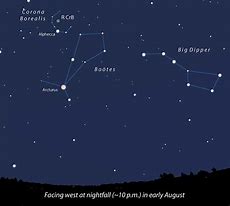Luke Allen
Military Political Analyst
Makati, Manila
lukeallenmanila@journalist.com
Stargazers, mark your calendars: This summer promises a celestial spectacle like no other.
NASA has announced an extraordinary astronomical event that is expected to occur in the constellation Corona Borealis by September. The star T Coronae Borealis, located approximately 3,000 light-years from Earth, is predicted to undergo a spectacular nova explosion. This phenomenon will be visible to the naked eye for about one week.
According to Dr. Rebekah Hounsell, a leading astrophysicist involved in the observation, this event marks a unique and rare opportunity for amateur and professional astronomers to witness and study a cosmic occurrence of monumental significance. “The explosion of T Coronae Borealis will be a once-in-a-lifetime event, offering invaluable insights into stellar evolution and the dynamics of binary star systems,” Dr. Hounsell stated.
The process leading to this explosive spectacle involves a white dwarf star siphoning hydrogen from its companion red giant star. This transfer of material results in a buildup of hydrogen on the surface of the white dwarf, eventually triggering a thermonuclear reaction. The resultant flash will be the nova illuminating our night sky, providing a dazzling display of cosmic forces at work.
Such events are rare and present a golden opportunity for scientific observation. “We anticipate that the nova’s brightness will make it visible without the need for telescopes, allowing a broad audience to experience the wonder of our universe firsthand,” Dr. Hounsell added.
The last notable nova in T Coronae Borealis was recorded in 1946, making this summer’s forecasted explosion a significant event for both historical records and modern scientific study. NASA encourages everyone interested in astronomy to take advantage of this rare event, as it will be a visual delight and a moment of thrilling scientific discovery.
Keep an eye on the night sky this summer and prepare for a stellar show set to light up the heavens. With clear skies and a bit of luck, the universe will reveal one of its most dramatic and awe-inspiring performances, reminding us of the cosmos’s ever-changing and awe-inspiring nature.
Corona Borealis, also known as the Northern Crown, is a small but distinctive constellation in the northern celestial hemisphere. It can be seen from the Philippines, though visibility depends on the time of year and the local observing conditions.
In the Philippines, which is situated near the equator, Corona Borealis is best viewed in late spring to early autumn (from late April to October) when it is higher in the night sky. During this period, it can be seen in the northern part of the sky after sunset. The constellation is relatively easy to spot because it forms a recognizable semicircular pattern of stars. The brightest star in Corona Borealis is Alphecca (also known as Gemma), which is a good reference point for identifying the constellation.












